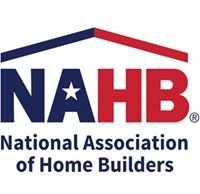WASHINGTON, D.C. – March 16, 2011 – (RealEstateRama) — A new resource for builders and remodelers looking for answers on the critical question of how to detect and remediate problematic drywall imported from China in recent years is now available from the National Association of Home Builders (NAHB).”Imported Problematic Drywall: Identification Strategies and Remediation Guidelines” can be downloaded at www.nahb.org/drywallguidelines.
The publication represents more than a year of intensive research, testing, analysis and evaluation under the auspices of NAHB’s Chinese Drywall Task Force, whose mission was to identify a permanent solution to problems with drywall emitting or off-gassing corrosive compounds, which can lead to blackening of copper electrical wiring and air conditioning evaporator coils and can cause mechanical, electrical and electronic failures.
“The downstream effects of these problems include widespread property damage, huge financial losses, hundreds of lawsuits, and legitimate concerns about possible health effects from living with these unpleasant airborne compounds,” said NAHB First Vice Chairman Barry Rutenberg, who moderated a webinar to introduce the guidelines to NAHB members.
“In a landscape cluttered with untested products, devices and procedures purported to resolve drywall problems, NAHB based these guidelines on scientifically proven technologies, materials, means and methods for remediating drywall problems in single-family homes, condominiums, apartments and townhomes,” Rutenberg said.
Designed to address problematic drywall in residential applications, the document does not represent the only approach to remediating the problem. It is not intended to set minimum or maximum requirements for remediation nor is it intended to be used to determine the effectiveness of remediation efforts that have already been completed. Builders might decide to follow different guidelines that are less inclusive or that include additional measures.
Among some of the document’s recommendations:
- Replace all low-voltage, signal and data wiring; all switches and receptacles; and all smoke, fire and carbon monoxide alarms and life-safety systems. This reiterates interim remediation guidance issued by a Federal Interagency Task Force on this issue last year.
- If the home was built between 2001 and 2008 and it has been confirmed that problematic drywall is present throughout the entire home, total remediation is the only viable option. Selective remediation is an option if problem drywall is found in a limited portion of the home that can be isolated.
- To determine whether the remediation has been adequate, conduct clearance testing after the drywall has been removed and the house has been cleaned and aired out but before the drywall is replaced.







